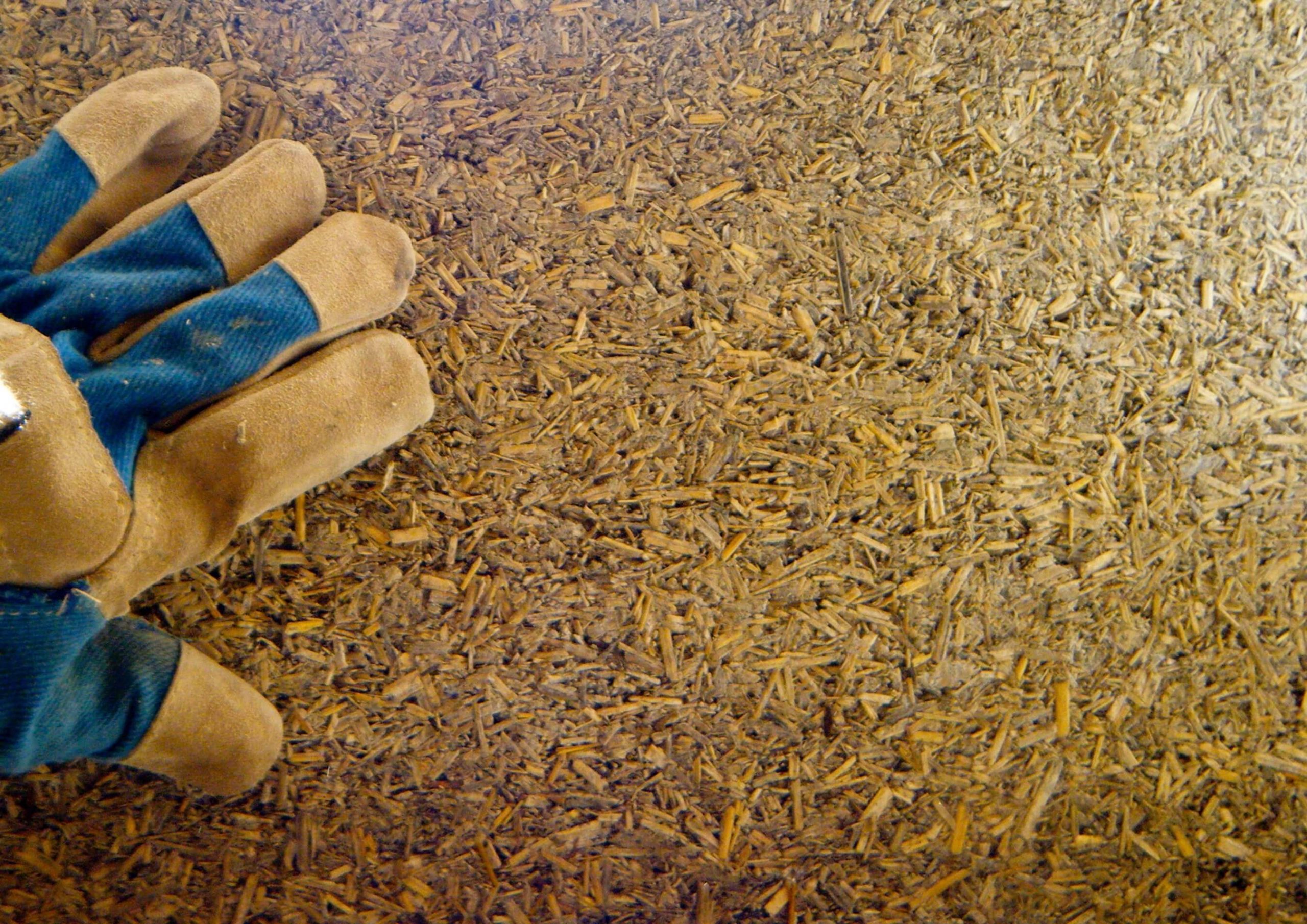A group of lucky participants was treated to an excellent weekend workshop on building with hempcrete (or hemp-lime), led by UK architect and hempcrete pioneer, Tom Woolley. Tom is the author of Hemp Lime Construction and Low Impact Building, and has been involved in many hempcrete and sustainable building projects throughout the UK.
The weekend began with a classroom session, during which Tom covered the materials and techniques for successful hemp-lime building, and showing the group photos and details of a variety of building projects, including his charming hemp-lime cottage.
We then moved on to making some sample mixes to demonstrate the combination of materials. We were working with two different mix types, and made a sample of a third type of mix. For all three mixes, the weight ratios of materials were the same:
- 1 kilogram of chopped hemp hurd (also known as shiv)
- 1.5 kilogram of powdered binder (natural hydraulic lime or hydrated lime and metakaolin)
- approximately 1.5 kilograms of water
The chopped hemp hurd or shiv needs to be fairly course (particle sizes ranging from 1/4 to 1 inch) and be relatively dust- and fiber-free. We were able to source Canadian-grown and processed hemp hurd from Plains Hemp in Manitoba.
Most UK-based hempcrete builders work with a natural hydraulic lime (NHL) as the basis for their binder. There is no North American source for NHL, so it tends to be expensive to import from Europe. We used an NHL 3.5 from St. Astier as one of our mix options. For a more locally-sourced version, we used a typical North American hydrated lime and a fired kaolin clay (called metakaolin) called Metapor. The NHL is a lime that chemically sets (hardens) through a reaction with the water content of the mix. North American hydrated lime does not set hydraulically (with water), but when mixed with a pozzolan like Metapor the two materials together have a hydraulic set.
The dry ingredients (hemp hurd and lime) are mixed together so that the powdered lime is covering all of the hemp, and then the water is introduced. Having done some work with hempcrete at Endeavour, we were surprised at how little water Tom uses in his mix. The final mix is just moist enough to lightly hold together when squeezed in a hand.
With some small scale mixes placed into test cones, we then moved on to installing hempcrete in some larger wall panels. These panels were built by Sarah Seitz for her PhD research work at Queen’s University, where she will perform tests to help determine the thermal insulation properties of hempcrete.
The panels simulate a typical double-stud construction, with a 2×4 frame on the “exterior” side of the panel and a 2×3 frame on the “interior” side.
As one group mixed batches of hempcrete in the mortar mixer, the others placed it into the forms and lightly tamped it into place. As the forms fill up, they are moved up the wall. The hempcrete retains its shape after less than 20 minutes in the forms. The filling and tamping continues right to the top of the wall. Once everybody was settled into their roles, it took less than 1.5 hours to fill a whole wall form.
In the end, we placed 40.25 cubic feet of hempcrete into the two walls. We used seven 40-lb bags of hemp hurd and seven bags of powdered ingredients to reach that quantity. With the small amount of water used in the mix, we’re anticipating a drying time for the 14-inch thick walls of about 2 weeks. This is much shorter than for the wetter mixes we have made in the past.
Cost-wise, we used $63 of hemp, $42 of hydrated lime and $21 of metakaolin, for a total material cost of $3.13 per cubic foot of insulation.
We will share Sarah’s thermal testing results when she has completed them. We are expecting to find their performance to be around R-2 to 2.5 per inch, meaning that our 14-inch wall would surpass current code requirements for thermal insulation.
This was a fun and informative workshop, and we’d like to thank Tom Woolley for sharing his deep knowledge of this subject with us!






